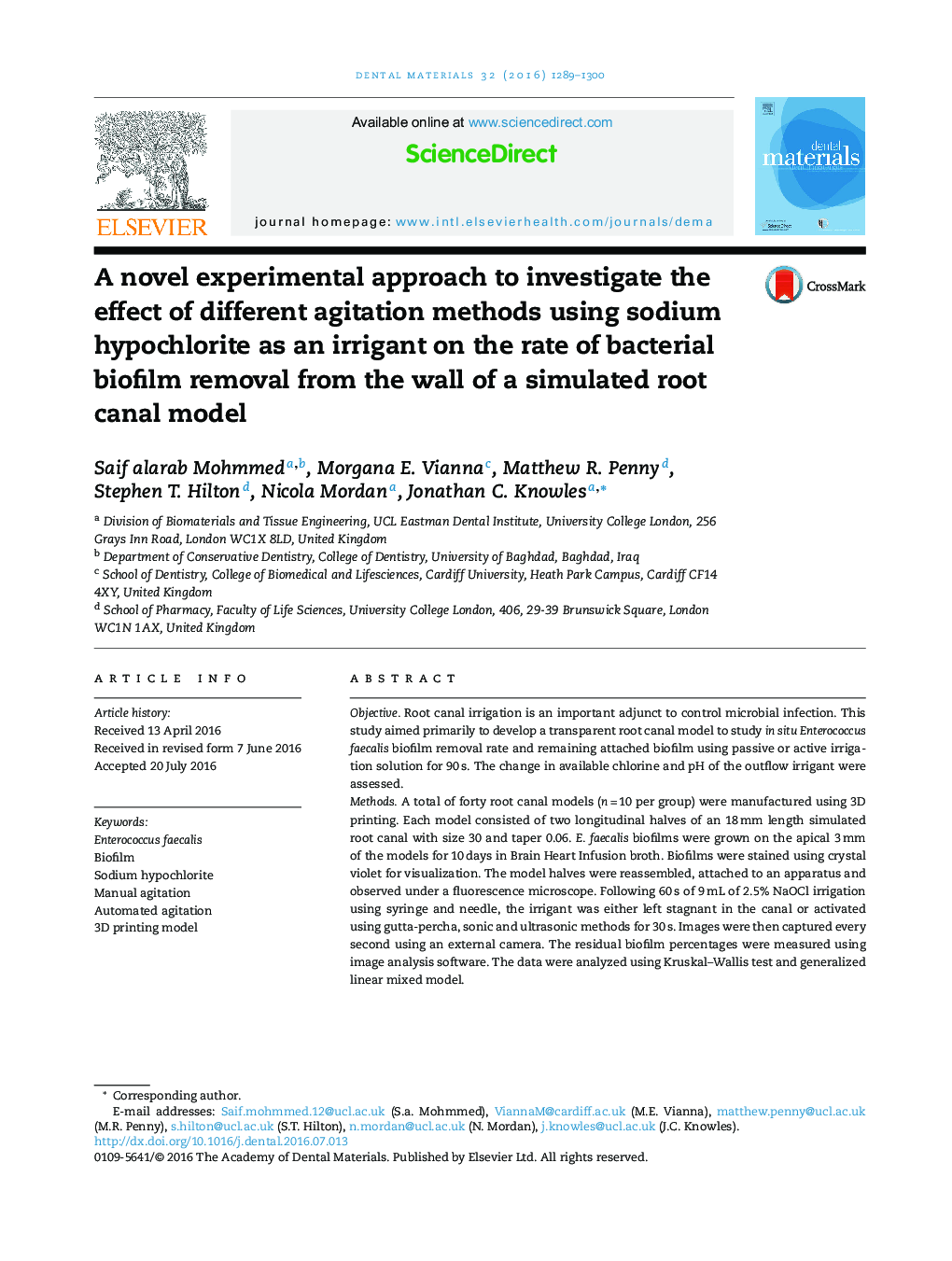| کد مقاله | کد نشریه | سال انتشار | مقاله انگلیسی | نسخه تمام متن |
|---|---|---|---|---|
| 5433184 | 1398056 | 2016 | 12 صفحه PDF | دانلود رایگان |
ObjectiveRoot canal irrigation is an important adjunct to control microbial infection. This study aimed primarily to develop a transparent root canal model to study in situ Enterococcus faecalis biofilm removal rate and remaining attached biofilm using passive or active irrigation solution for 90 s. The change in available chlorine and pH of the outflow irrigant were assessed.MethodsA total of forty root canal models (n = 10 per group) were manufactured using 3D printing. Each model consisted of two longitudinal halves of an 18 mm length simulated root canal with size 30 and taper 0.06. E. faecalis biofilms were grown on the apical 3 mm of the models for 10 days in Brain Heart Infusion broth. Biofilms were stained using crystal violet for visualization. The model halves were reassembled, attached to an apparatus and observed under a fluorescence microscope. Following 60 s of 9 mL of 2.5% NaOCl irrigation using syringe and needle, the irrigant was either left stagnant in the canal or activated using gutta-percha, sonic and ultrasonic methods for 30 s. Images were then captured every second using an external camera. The residual biofilm percentages were measured using image analysis software. The data were analyzed using Kruskal-Wallis test and generalized linear mixed model.ResultsThe highest level of biofilm removal was with ultrasonic agitation (90.13%) followed by sonic (88.72%), gutta-percha (80.59%), and passive irrigation group (control) (43.67%) respectively. All agitation groups reduced the available chlorine and pH of NaOCl more than that in the passive irrigation group.SignificanceThe 3D printing method provided a novel model to create a root canal simulation for studying and understanding a real-time biofilm removal under microscopy. Ultrasonic agitation of NaOCl left the least amount of residual biofilm in comparison to sonic and gutta-percha agitation methods.
Journal: Dental Materials - Volume 32, Issue 10, October 2016, Pages 1289-1300
